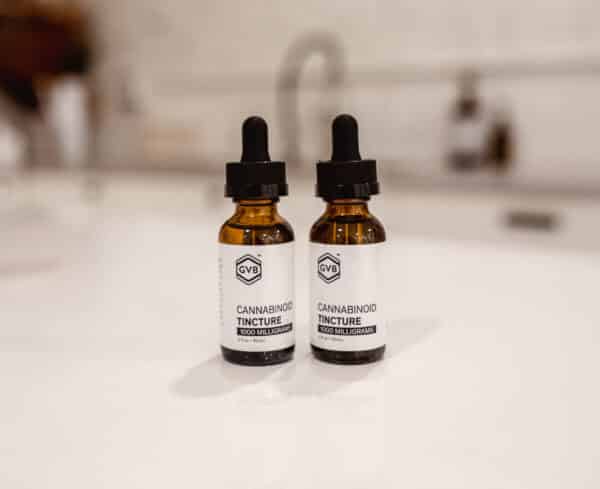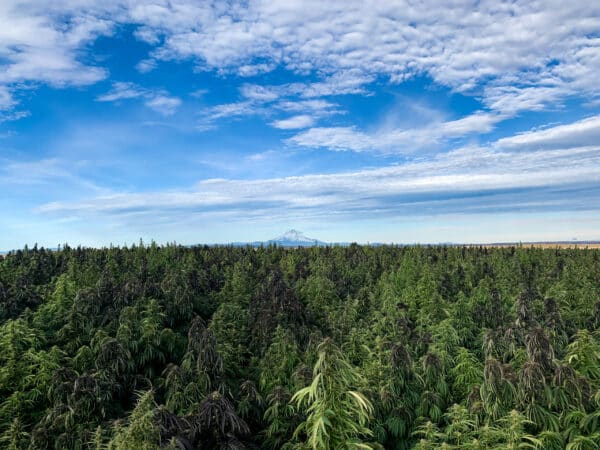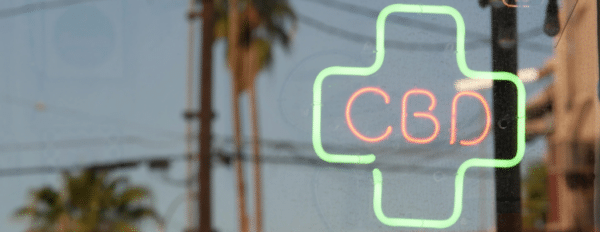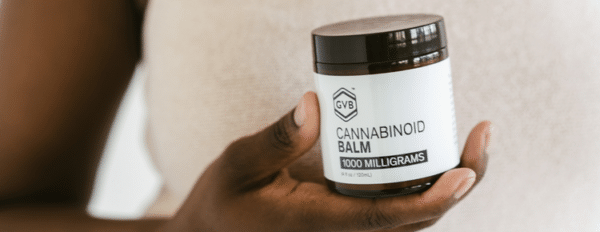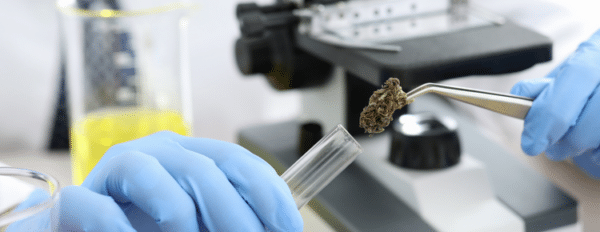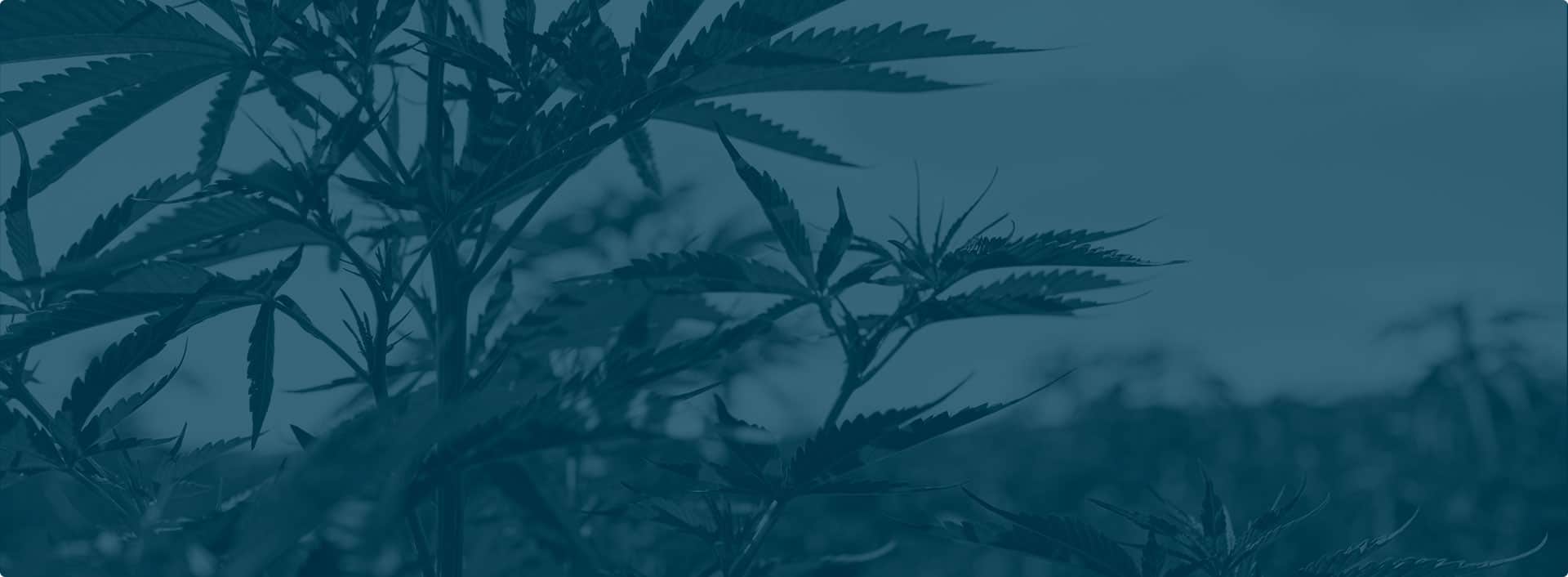It’s no secret that Americans are having trouble getting quality sleep. Whether it’s because of stress at work, anxiety, tech overload, or even the inability to relax, sometimes we just can’t seem to shut down. The problem is so widespread it’s becoming an epidemic.
A new report released in 2022, The State of Sleep In America, surveyed Americans and found that nearly one-third of adults (33%), or around 84 million people, regularly experience “poor” to “fair” sleep. Furthermore, over half (55%) of Americans say that sleeping well is a “major priority,” placing it higher on their priority list than other lifestyle factors, such as social interaction (45%) or healthy eating (40%).
While there may not be a one-size-fits-all solution to the problem, industry experts anticipate cannabis entrepreneurs have the potential to make a real difference with CBN (cannabinol) as a natural sleep aid. According to industry experts, sleep research funding by the National Institutes for Health (NIH) is expected to reach $520 million in 2023, nearly doubling what it was just a decade ago.
And while sleep deprivation continues sweeping the nation, studies indicate that CBN might be what people need to combat lack of sleep.
In this blog post, we’ll explore America’s sleep crisis and examine CBN’s potential to help those struggling with their snooze cycle get a better night’s sleep.
Sleep 101: The Basics
Typically, when it comes to the pursuit of quality sleep, Americans don’t often think cannabis would be involved. But, given the specific effects of certain cannabinoids on different stages of the sleep cycle, knowledgeable cannabis enthusiasts take a keen interest in understanding their body and their sleep needs.
For them, getting to grips with what they need and why they may suffer from a lack of sleep can help shape the type of cannabis products that would best serve them.
And while we may not all be experts in cannabis or sleep deprivation, it’s worth brushing up on some sleep basics before learning why Americans are facing such severe deprivation and how the herb might just save the day (or night).
A Breakdown of Sleep Needs According to Age
Sleep needs change across the lifespan. In general, experts recommend:
– Newborns through the first year: up to 18 hours daily
– Ages 1-3: 12-15 hours daily
– Ages 3-5: 11-13 hours daily
– Ages 2-12: 9-11 hours daily
– Teens: 9-10 hours daily
– Adults: 7- 8 hours daily
Sleep Stages: An Overview
As a general guideline, sleep consists of the following stages:
– Stage W (Wakefulness)
– Stage N1
– Stage N2
– Stage N3
– Stage R (Rapid Eye Movement, or REM)
Healthy sleepers cycle between the different stages of sleep every 90 minutes during an eight-hour sleep period. Let’s examine each stage in greater detail to see how they help us recharge.
Stage N1
Stage N1 occurs during the transition from wakefulness to sleepiness. Although this brief stage lasts between five to ten minutes, dreams may also occur during this time. While dozing off, the mind is still aware of its surroundings and can be easily roused back to awakeness.
During this phase, there is also a slowing of the brain waves, eye movements, heartbeat, and breathing. The muscles of the body may twitch as relaxation occurs.
Stage N2
After passing Stage N1, the process moves onto Stage N2, during which breathing and heart rate will continue to slow. Throughout the night, Stage N2 should account for about half of the total sleep time. This stage has the following characteristics:
– A lost sense of surroundings
– A decreased internal body temperature
– No eye movement
– Changes in breathing pattern
Also, during this time, the brain produces sleep spindles, characterized by bursts of fast, rhythmic brain waves. Sleep spindles are essential for memory consolidation, when the brain collects, organizes and filters new memories from the previous day.
Additionally, the body takes an even more relaxed state so that it is ready to enter stage N3 and REM, the deepest sleep stages in which the body and mind can recover, rejuvenate, and prepare for the next day.
Stage N3
Stage N3 is also known as Slow Wave Sleep or Delta Sleep due to slowed delta brain waves present during this stage of sleep. During N3 sleep, the body’s miraculous self-healing and repair process occurs, facilitated by the secretion of growth hormone.
In Stage N3, the first segment usually lasts 45-90 minutes. As the night progresses, the duration of subsequent segments of N3 sleep gradually shortens. This stage has the following key characteristics:
– Full muscle relaxation
– Slowed breathing and decreased blood pressure
– Transition to the deepest sleep stage
It is also important to note that N3 sleep diminishes with age, to the point that it can even be absent from seniors at night. Nevertheless, this does not indicate disease or disorder as it happens to healthy sleepers as well.
Stage R (REM)
Stage R is called REM sleep or “rapid eye movement” sleep. REM sleep usually begins between 90 and 110 minutes after falling asleep, with subsequent cycles occurring every 90 minutes.
Over the course of the night, REM sleep periods become longer and longer. Also, the heart rate increases during this cycle, and irregular breathing occurs. Additionally, the dreaming process happens during REM sleep. Stage R dreams tend to be remembered by healthy sleepers.
A particularly clever feature of the body is that it creates chemicals that temporarily paralyze the sleeper to prevent them from ‘acting out’ in their dreams. And for good reason, since people tend to be very active at this stage despite being asleep. In this cycle, the eyes dart back and forth rapidly, just as they do when awake.
Understanding Sleep Disorders and Disruptions
Sleep disorders and disruptions can be an absolute nightmare. Not only are they disruptive to quality of life, but they can also be a sign of something more serious. In light of that, here are a few of the most common sleep disorders and disruptions and how they may interfere with getting a good night’s sleep.
Insomnia
Insomnia occurs when there is difficulty initiating or staying asleep. Early morning awakenings can also occur, where an individual wakes up several hours before their normal schedule and is unable to fall back to sleep. As a result, individuals experience excessive sleepiness during the day, typically resulting in functional impairments during the daytime.
Narcolepsy
Narcolepsy is characterized by excessive daytime sleepiness (including episodes of irresistible sleepiness) and sudden muscle weakness. In narcolepsy, sudden muscle weakness can be triggered by strong emotions or surprise. The onset of narcolepsy is commonly referred to as a “sleep attack” and can occur even when walking or doing other physical activities.
Restless Leg Syndrome (RLS)
The symptoms of RLS include unpleasant “creeping” sensations, often originating in the lower legs but accompanied by aches and pains across the legs. It may cause difficulty falling asleep and is relieved by moving the legs, such as walking or kicking.
Sleep Apnea
There is more to snoring than just being annoying. It could be an indication of sleep apnea, characterized by rapid gasping or snorting noises, causing sleep to be interrupted momentarily. Due to frequent interruptions during sleep, those with sleep apnea may also feel excessively sleepy during the day.
Sleep Disruptions
Sleep disruptions can significantly impact individual performance and physical and mental health, leading to increased sluggishness, irritability, and difficulty focusing during the day. For instance, third-shift workers often experience disturbances in natural circadian rhythms and melatonin secretion. Melatonin is necessary for other hormone regulation functions within the body, so repeated disruption can lead to even more complicated issues.
Sleep disturbances resulting from frequent nighttime trips to the bathroom or night sweats can also lead to a compromised ability to concentrate and make decisions.
Perhaps most significant of all is jet lag – the disruption in biological rhythms caused by traveling quickly through multiple time zones that affects sleep, eating, and activity patterns.
All of this disruption can significantly impact an individual’s energy levels, moods, motivation, and ability to function optimally. Getting proper restorative sleep is essential for all individuals striving to maintain good health and productivity.
Americans’ Top Priority Is Sleep, Yet Sleep Quality Remains Low
It is well known that a lack of quality sleep is linked to a lack of overall well-being, which is why it’s no surprise that sleep is the number one priority for Americans. With long work hours, excessive screen time, and hectic lifestyles, overthinking the day’s earlier events and trying to shut off racing thoughts can make getting a good night’s rest feel like an unattainable dream. In the 2022 sleep report, a staggering 81% of Americans say their mental activity — thinking, racing thoughts, and feelings — keeps them awake at night.
Although sleep is recognized as being paramount, sleep quality remains low among many people. Mental health, age, mattress satisfaction, and sex are also closely linked to sleep quality. For example, more women than men say sleep is a top priority (61% vs. 48%, respectively) and worry more about losing sleep.
In addition, Americans’ poor sleep quality also impacts overall economic growth and is linked to weak GDP growth. Research shows the American economy loses an estimated $44.6 billion per year in unscheduled absences among workers as a consequence of poor sleep.
In their quest for relief, Americans are increasingly turning to sleep aids to improve their sleep quality. The most recent statistics show Americans spent $437 million on OTC sleep aids in 2021, double their 2011 spending of $217 million.
The market for natural sleep aids, however, is one worth watching, as it is expected to continue growing. In the wake of America’s crumbling marijuana prohibition, many are turning to health-promoting cannabinoids to find natural sleep remedies.
One phytocannabinoid that has shown promise as a natural sleep aid is cannabinol (CBN).
What Is the Cannabinoid CBN?
CBN is a phytocannabinoid found naturally in high amounts in aged cannabis plants. Unknown to most people is that CBN is actually the very first cannabinoid isolated in 1896 by Thomas Barlow Wood, WT Newton Spivey, and Thomas Hill Easterfield.
With its sedative properties and predominant presence in older cannabis flowers, CBN was often considered a less desirable cannabinoid than CBD or THC. However, despite being the “original” phytocannabinoid, CBN can be regarded as a “sleeper” cannabinoid since in the past, it wasn’t nearly as popular as THC, CBD, or terpenes.
The Unique Connection Between CBN and THC
Scientists now recognize CBN as a major cannabinoid, stemming from a 1999 study done by the United Nations Office on Drugs and Crime (UNODC). In the study, cannabis samples tested after four years were found to contain half of their original THC concentration. In addition, THC converted to CBN as it oxidized and dissipated.
According to the study, the most THC degradation occurred after two years of improper storage, indicating a strong relationship between the conversion of THC to CBN and the vulnerability of the plants.
The study revealed that over time, THC degrades into CBN. Thus the longer cannabis ages, the more CBN it will contain. As a result of the study, researchers have learned how CBN and THC cannabinoids interact differently with CB2 and CB1 receptors.
What Sets CBN Apart From CBD?
Even though they have similar names, CBD and CBN are entirely different molecules. The two cannabinoids are present in both marijuana and hemp (a cannabis subspecies with less than 0.3% THC) originating from CBGA. While some similarities have been discovered regarding their ability to address pain and inflammation, they differ primarily in their intended purposes.
Additionally, CBD has been extensively researched, and studies have revealed its anti-inflammatory, anxiolytic, and anticonvulsant properties. Thus, it serves as an industry staple and powerful therapeutic used by people seeking relief from anxiety, and epilepsy, among others.
And while some research suggests CBN may also possess anticonvulsant properties, most current research focuses on its ability to relax the mind and induce sleep.
The following are notable differences between CBN and CBD:
– A significant amount of CBD is found in hemp plants, making it more accessible and affordable.
– There is more research and understanding of CBD than CBN at present.
– CBN is formed by oxidizing THC, while decarboxylating CBDA present in raw cannabis flowers produces CBD.
– The FDA has approved one CBD-based medication for treating epilepsy/seizures, whereas CBN has not been approved.
– The two compounds are technically psychoactive, but CBD leaves the user unintoxicated, while CBN alters the mind very mildly due to its THC roots.
– CBD reduces appetite, whereas CBN stimulates it.
Although CBN and CBD each have unique benefits and effects, they are likely to complement one another well when combined. When cannabinoids are consumed together, they synergistically amplify each other’s actions, according to a phenomena called the entourage effect. Several studies have demonstrated the entourage effect, including a study showing the combined effects of CBN and CBD reduced pain in rats more effectively than either compound alone.
Does CBN Help With Sleep?
CBN-containing products are marketed as sleep aids by many companies, but does CBN actually alleviate insomnia and sleeplessness? As of yet, we’re still waiting for any solid insights.
Due to decades of cannabis prohibition, the amount of study has been limited, making it difficult to draw any definitive conclusions about the cannabinoid, even though it seems more effective when combined with other cannabinoids such as THC.
Historically, most of the research on cannabinol effects, particularly sedation, has been conducted on rodents. For example, a 1975 study found that CBN increased the sedative effects of THC in mice and rats.
As part of another groundbreaking 1975 clinical trial, five male participants were given various amounts of THC and CBN. Scientists found that ingesting THC and CBN together resulted in more substantial sedative effects than consuming THC alone.
In addition, during the study, participants’ heart rates increased with THC but not with CBN, further indicating that CBN might be effective as a sedative. However, because of the trial’s small sample size and age, its results were promising but inconclusive.
Similar findings were found in a 1995 mouse study that concluded synthetic CBN lengthened mice’s sleep periods. CBN is widely regarded as a powerful sedative based on the results of these studies, which cannabis industry experts have widely accepted. Nevertheless, experts agree that further clinical trials and research are needed to reach any conclusive findings.
Why You Should Consider Offering CBN Products To Your Customers
Even though research is still being conducted concerning CBN’s potential as a sleep aid, the general public seems convinced that CBN can improve sleep, increasing sales of sleep-promoting products containing CBN. Additionally, some awareness has spread about research on CBN as a pain reliever. However, it is more desirable to use this compound alongside other cannabinoids due to the entourage effect.
And while the average buyer doesn’t fully grasp the potential benefits of CBN, CBD has become a household name in a relatively short time, with the entourage effect known to many CBD lovers. As a result, CBD’s value may be boosted in the eyes of consumers when combined with other cannabinoids, such as CBN extract.
What is CBN extract?
CBN extract is produced from cannabis flowers that contain a high level of cannabinoids, most notably the cannabinoid CBN. This bulk hemp ingredient is typically available in several forms, most notably distillate and isolate. CBN distillate and CBN isolate have potency levels ranging from 70-97% of total cannabinoids, and each extract type can be used in a wide range of products.
What is CBN distillate?
With CBN distillate, large amounts of CBN are present in a distilled cannabinoid extract. Even though CBN distillate is far more refined than crude extract, it retains all the terpenes, minor cannabinoids, and other beneficial compounds found naturally in hemp flowers. Due to this feature, CBN distillate is highly preferred for products such as gummies, tinctures, and vaping products.
CBN distillate typically has a honey-like texture and appearance, offering CBN concentrations up to 80%. Although traces of THC can be found in some CBN distillates, this extract can be further purified to yield no detectable amounts of THC.
What is CBN isolate?
CBN isolate is almost entirely composed of pure cannabinol molecules. Due to its high chemical purity of 97%+, CBN isolate is suited to formulate many different products, despite not being particularly useful in its raw form.
The beauty of CBN isolate lies in its superior compatibility with virtually any cannabinoid extract. The nature of this ingredient allows any product to be easily infused with CBN’s distinct and fascinating benefits.
Uses
It’s possible to use CBN distillate and isolate for many of the same purposes despite their differences. For example, in vape cartridges, distillate offers a fuller spectrum of effects, whereas CBN isolate is more suitable for complex formulations that are difficult to balance. Plus, since both forms of the extract can be formulated with undetectable levels of THC, both CBN isolate and distillate are acceptable under federal and various state regulations.
Need Product Ideas?
Examples of products that are suitable for the simplistic nature of CBN isolate include:
– Tablets
– Capsules
– Topicals
Product types that work well with the rich flavor of CBN distillate include:
– Gummies
– Vape cartridges
– Tinctures
In reality, any of the products listed above can include CBN extracts of any type. Your strategy will ultimately depend on your goal and your target audience. You can customize the design of your new CBN-infused sleep products by partnering with an experienced cannabinoid white labeller.
When Sourcing The Ideal CBN Extract, What Should I Look For?
What is the best form of CBN extract for your specific needs now that you know all the essential details about CBN distillate and isolate? Here are some crucial facts to consider.
Historically, cannabinoid isolates were sought after because they contained no THC. However, today, removing any traces of THC from distillate is just as easy, so it is no longer an advantage unique to isolate.
When it comes to today’s hemp products, the primary reason to avoid using CBN distillate is because it has the potential to unbalance existing formulations. For example, for a product that already contains cannabinoid distillates, adding more extracts might not be a good idea. Alternatively, you could use an isolate extract to incorporate CBN into the product.
Realistically, these are just a few factors to consider before selecting a cannabinoid extract, none less important than the other. The best way to design your hemp product line is with the help of a trusted hemp white-label company like GVB Biopharma.
Address your Customers’ Concerns with the Best CBN Extract
The data shows millions of Americans actively seek natural solutions to their sleep problems. We can help you get started if you’re interested in providing customers with a CBN option. Plus, when searching for an effective CBN isolate or distillate, there’s no time to play guessing games. Our team at GVB Biopharma understands the nuances between extracts and is here to help. As an industry leader, we know what it takes to custom-fit products to your desired specifications. With unrivaled expertise, our integrated approach ensures optimal results for each of your final products.
By partnering with GVB Biopharma, you can unlock the maximum potential benefits and make all the difference to your clients and your company. Let us help give you an edge up on the competition with the best CBN extracts designed to give your customers a well-deserved restful night’s sleep. Contact us for your consultation today!
CBN & sleep FAQs
1. Does CBN make you groggy the next day?
People who use CBN before bed do not usually report that this cannabinoid causes grogginess or tiredness the following morning. In general, it is rare for users to complain of grogginess after using any cannabinoid — these natural substances have very limited side effects and have a limited overall impact on the human body and nervous system.
2. Can I take CBN every night?
While there does not appear to be any particular indication that taking CBN on a nightly basis poses any dangers to the average person, that’s the type of question for medical doctors and researchers — not cannabinoid producers. If you take CBN every night and you are worried about developing side effects, ask a doctor for their expert opinion.
3. Is CBN better than melatonin?
It doesn’t make sense to directly compare CBN and melatonin, but it’s true that CBN may have benefits that melatonin lacks while also making up for some of melatonin’s detriments. Melatonin, for instance, is a natural hormone, and nobody knows how introducing this hormone might disrupt melatonin already produced by the brain. The brain doesn’t produce CBN, though, eliminating this particular potential for conflict.
4. What are the side effects of CBN?
People who use CBN don’t usually note any side effects. If any side effects are reported, they almost always consist of excessive sleepiness or mild digestive disturbance. It’s possible that future research may unveil some previously unknown dangers of cannabinoids, but at present, these substances appear to be almost entirely benign.
Sources
- 1. Casper-Gallup State of Sleep in America 2022 Report
- 2. Corroon J. (2021). Cannabinol and Sleep: Separating Fact from Fiction. Cannabis and cannabinoid research, 6(5), 366–371
- 3. Total sleep research funding by the National Institutes for Health 2013-2023
- 4. Kesner, A. J., & Lovinger, D. M. (2020). Cannabinoids, Endocannabinoids and Sleep. Frontiers in molecular neuroscience, 13, 125.
- 5. Sleep Phases and Stages
- 6. Bidlingmaier, M., & Strasburger, C. J. (2010). Growth hormone. Handbook of experimental pharmacology, (195), 187–200.
- 7. C. M., & Figueiro, M. G. (2017). Measuring Light at Night and Melatonin Levels in Shift Workers: A Review of the Literature. Biological research for nursing, 19(4), 365–374.
- 8. Sleeping aids used by adults in the United States in 2022
- 9. OTC Sales Statistics
- 10. Vaillancourt, R., Gallagher, S., Cameron, J. D., & Dhalla, R. (2022). Cannabis use in patients with insomnia and sleep disorders: Retrospective chart review. Canadian pharmacists journal : CPJ = Revue des pharmaciens du Canada : RPC, 155(3), 175–180.
- 11. CBN and D9-THC concentration ratio as an indicator of the age of stored marijuana samples
- 12. Rapin, L., Gamaoun, R., El Hage, C., Arboleda, M. F., & Prosk, E. (2021). Cannabidiol use and effectiveness: real-world evidence from a Canadian medical cannabis clinic. Journal of cannabis research, 3(1), 19.
- 13. Thornton, C., Dickson, K. E., Carty, D. R., Ashpole, N. M., & Willett, K. L. (2020). Cannabis constituents reduce seizure behavior in chemically-induced and scn1a-mutant zebrafish. Epilepsy & behavior : E&B, 110, 107152.
- 14. Abu-Sawwa, R., & Stehling, C. (2020). Epidiolex (Cannabidiol) Primer: Frequently Asked Questions for Patients and Caregivers. The journal of pediatric pharmacology and therapeutics : JPPT : the official journal of PPAG, 25(1), 75–77.
- 15. De Petrocellis, L., Ligresti, A., Moriello, A. S., Allarà, M., Bisogno, T., Petrosino, S., Stott, C. G., & Di Marzo, V. (2011). Effects of cannabinoids and cannabinoid-enriched Cannabis extracts on TRP channels and endocannabinoid metabolic enzymes. British journal of pharmacology, 163(7), 1479–1494.
- 16. Ferber, S. G., Namdar, D., Hen-Shoval, D., Eger, G., Koltai, H., Shoval, G., Shbiro, L., & Weller, A. (2020). The “Entourage Effect”: Terpenes Coupled with Cannabinoids for the Treatment of Mood Disorders and Anxiety Disorders. Current neuropharmacology, 18(2), 87–96.
- 17. Wong, H., & Cairns, B. E. (2019). Cannabidiol, cannabinol and their combinations act as peripheral analgesics in a rat model of myofascial pain. Archives of oral biology, 104, 33–39.
- 18. Takahashi, R. N., & Karniol, I. G. (1975). Pharmacologic interaction between cannabinol and delta9-tetrahydrocannabinol. Psychopharmacologia, 41(3), 277–284.
- 19. Karniol, I. G., Shirakawa, I., Takahashi, R. N., Knobel, E., & Musty, R. E. (1975). Effects of delta9-tetrahydrocannabinol and cannabinol in man. Pharmacology, 13(6), 502–512.
- 20. Yoshida, H., Usami, N., Ohishi, Y., Watanabe, K., Yamamoto, I., & Yoshimura, H. (1995). Synthesis and pharmacological effects in mice of halogenated cannabinol derivatives. Chemical & pharmaceutical bulletin, 43(2), 335–337.
- 21. Δ9-Tetrahydrocannabinol and Cannabinol Activate Capsaicin-Sensitive Sensory Nerves via a CB1 and CB2 Cannabinoid Receptor-Independent Mechanism. Peter M. Zygmunt, David A. Andersson and Edward D. Högestätt Journal of Neuroscience 1 June 2002, 22 (11) 4720-4727; DOI:

